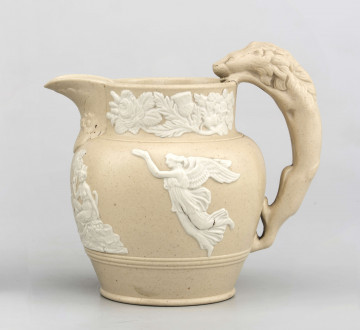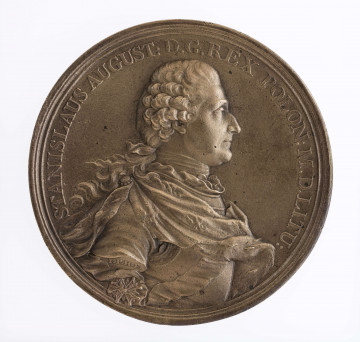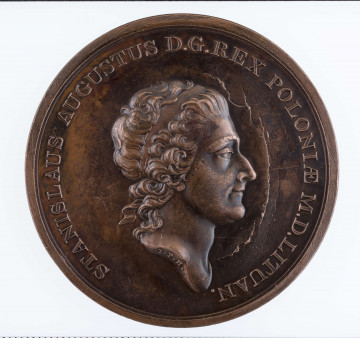
Creamer
1830 — 1840
National Museum in Lublin
Part of the collection: Polish medallic art.
At the end of his reign, John III Sobieski (1674–1696) realised that he would not reform the Commonwealth, nor would he be able to restore its importance. The plans to subjugate Ducal Prussia failed, the glory from Vienna did not bring back the lands seized by Turkey, and peace with Russia, apart from the loss of vast areas, made this country a spokesman for the Orthodox Church in the Commonwealth. The quarrelling elites, service to foreign courts, led the country towards a civil war.
In this situation, efforts were made to use even minor achievements to add splendour to the fading monarchical majesty. Such an opportunity was provided by the dynastic and political success in the form of the marriage of the royal daughter to the Elector of Bavaria and the victorious skirmish with the Tatars in Podolia in 1694. To commemorate these events, a medal was commissioned to the Nuremberg medallist Georg Hautsch (1664-1736).
The obverse depicts John III Sobieski dressed as a Roman legionary, decorated with a laurel wreath by the goddess of victory, Victoria, and presented by the god of love, Cupid, with a Bavarian shield and a wreath of myrtle - the symbol of marital happiness and fertility. The iconography is completed by the following inscriptions: DUPLEX POLONIAE / HILARITAS /1694 (Double Polish Joy 1694) and in an arch near the rim: SUCCEDIT LAUREA MYRTO (The myrtle is followed by the laurel). Their content indicates not only the momentousness of these events, but also stresses the connection between dynastic politics and military triumph. On the reverse, there is a scene of a fight between Polish troops and Tartars guarding Turkish wagons consisting of carts and camels with saddlebags, which were delivering provisions and ammunition to the fortress in Kamieniec Podolski, besieged by the Polish army. In the background there is a landscape with a view of a fortified castle and a flowing river. The inscriptions PRAELVDIA MAIORIS VICTORIAE (The Beginning of a Greater Victory) and FVSIS HOSTIBUS COMEATV INTERCEPTO (The Enemy Dispersed, Reinforcements Taken) express hope for the recapture of Kamieniec.
The scene probably depicts the skirmish near Uścieszek fought on 6 October 1694. In the background there are probably the Holy Trinity Trenches - a bastion erected on the Dniester in 1692 by Hetman Stanisław Jabłonowski, used to block Turkish access to Kamieniec Podolski.
Tomasz Markiewicz
Author / creator
Dimensions
cały obiekt: width: 42,8 mm
Object type
medal
Technique
stamp minting
Creation time / dating
Creation / finding place
Owner
The National Museum in Lublin
Identification number
Location / status

1830 — 1840
National Museum in Lublin

National Museum in Lublin

National Museum in Lublin
DISCOVER this TOPIC
Castle Museum in Łańcut
DISCOVER this PATH
Educational path